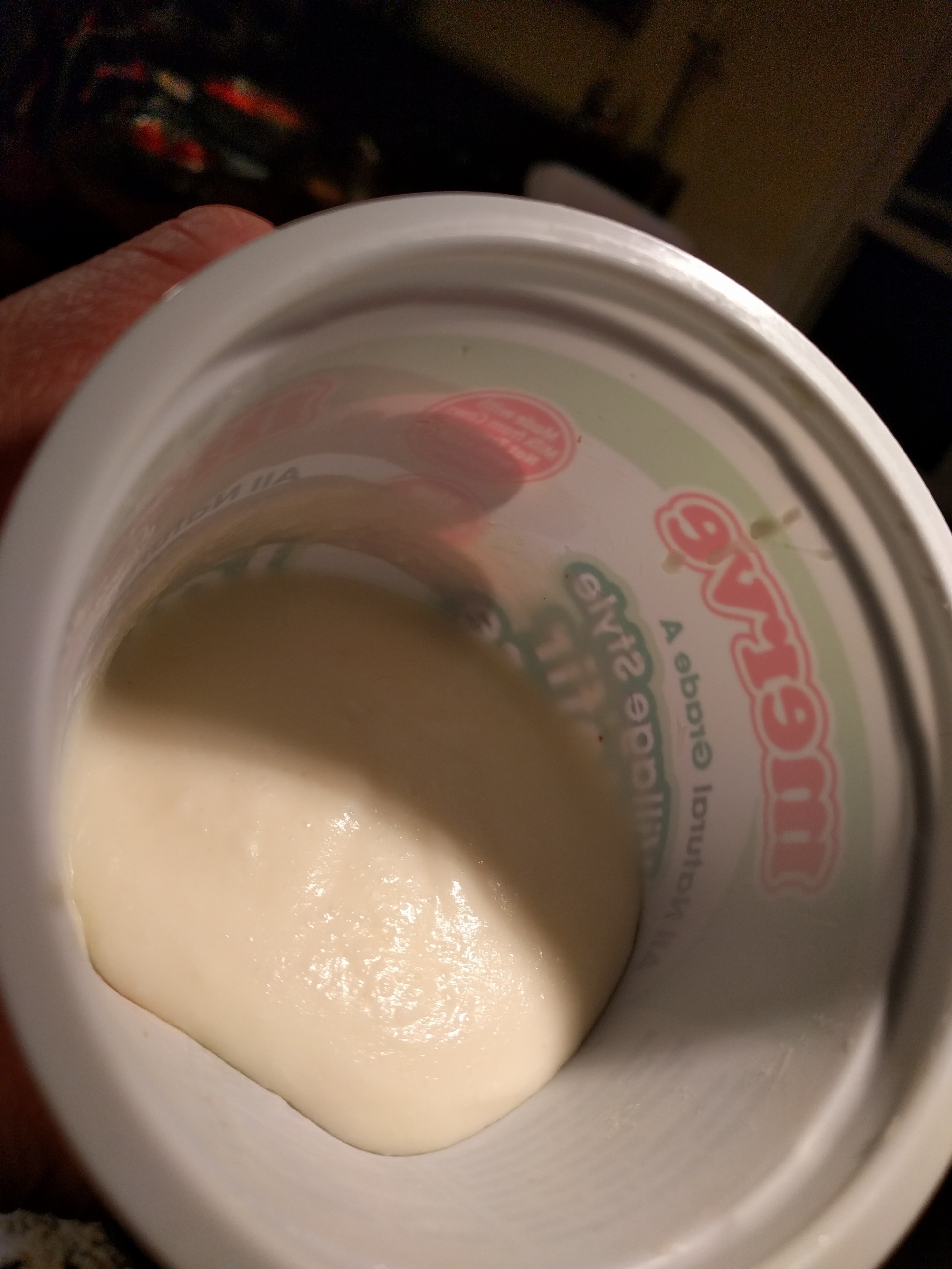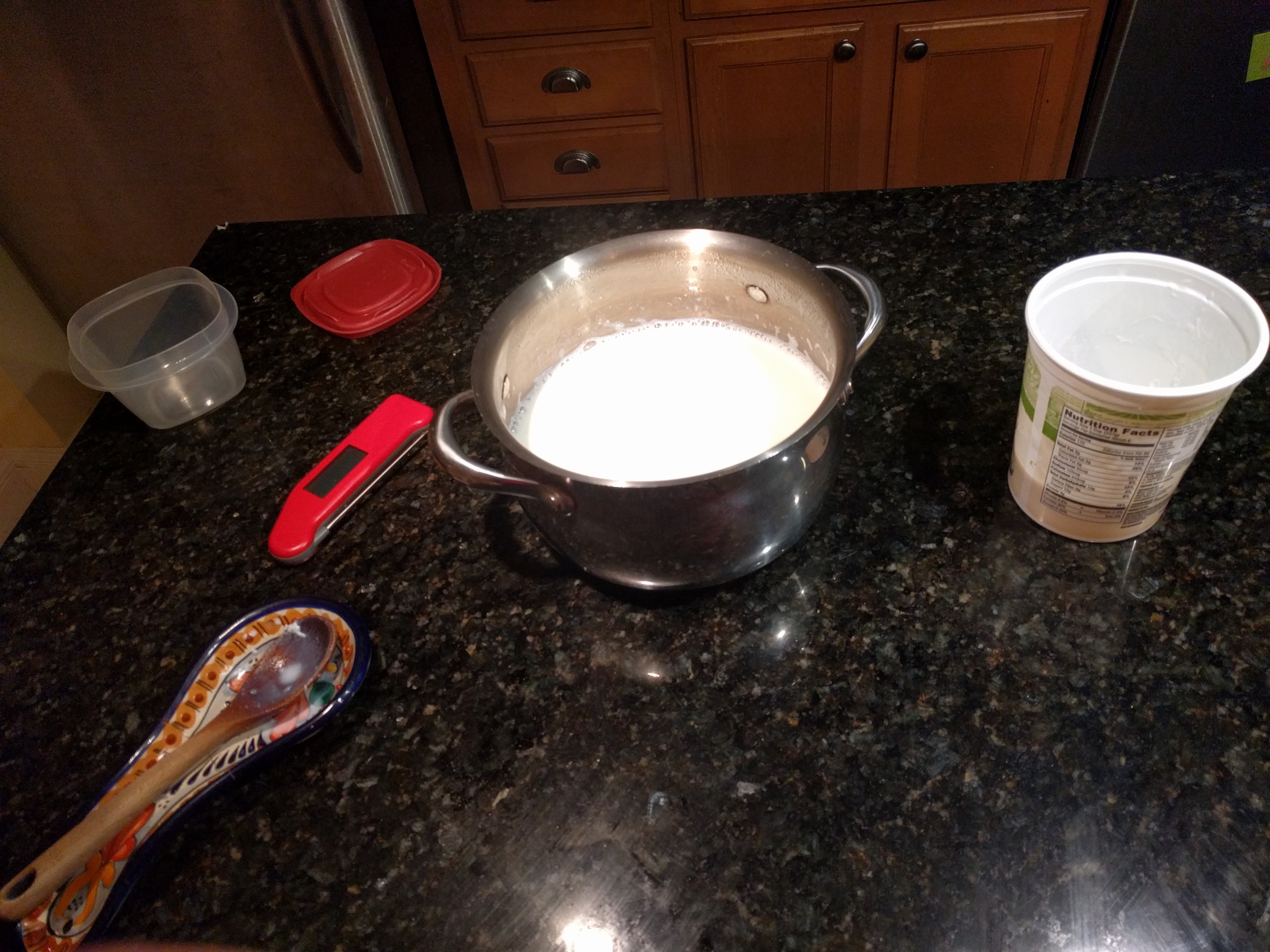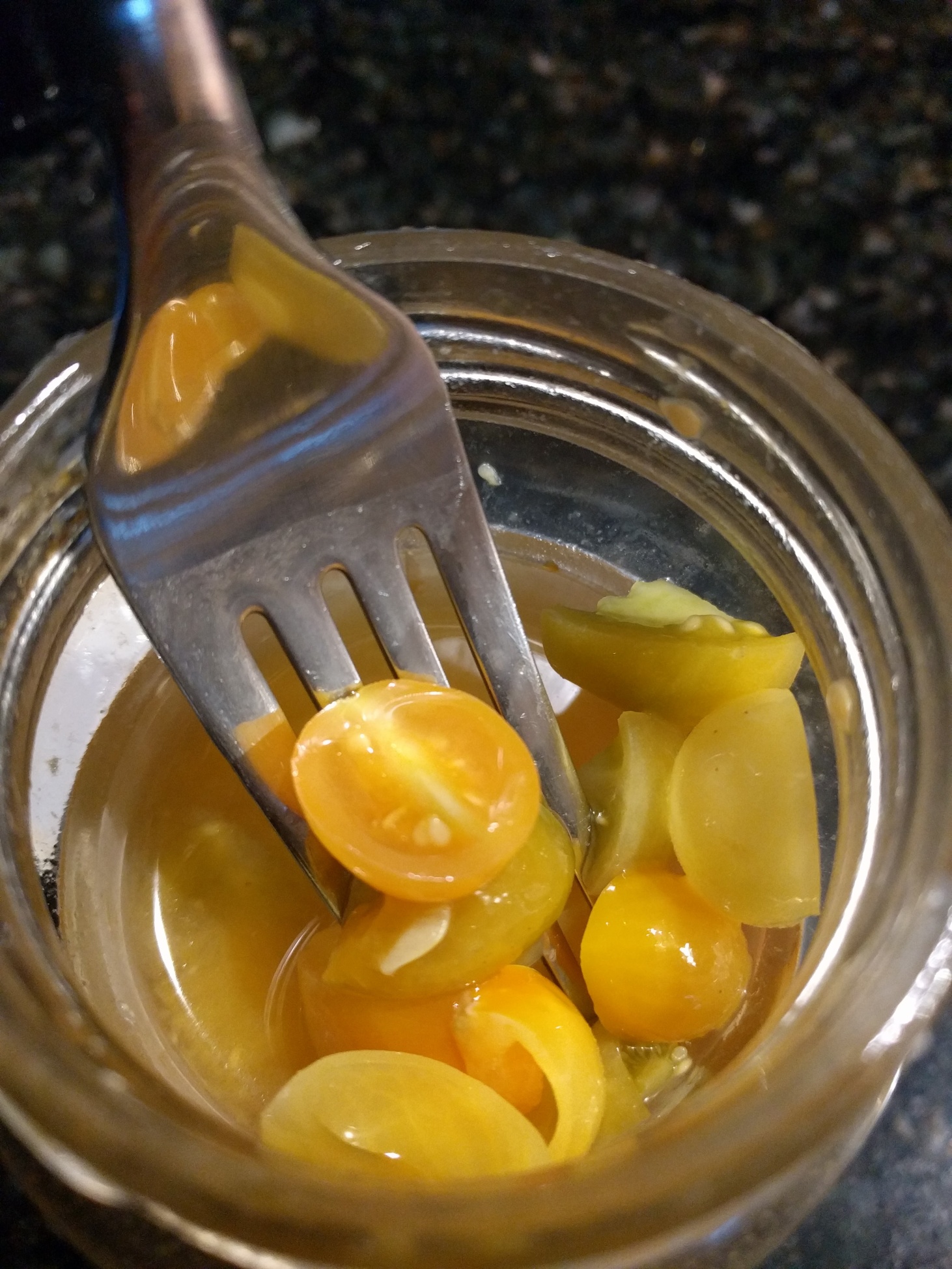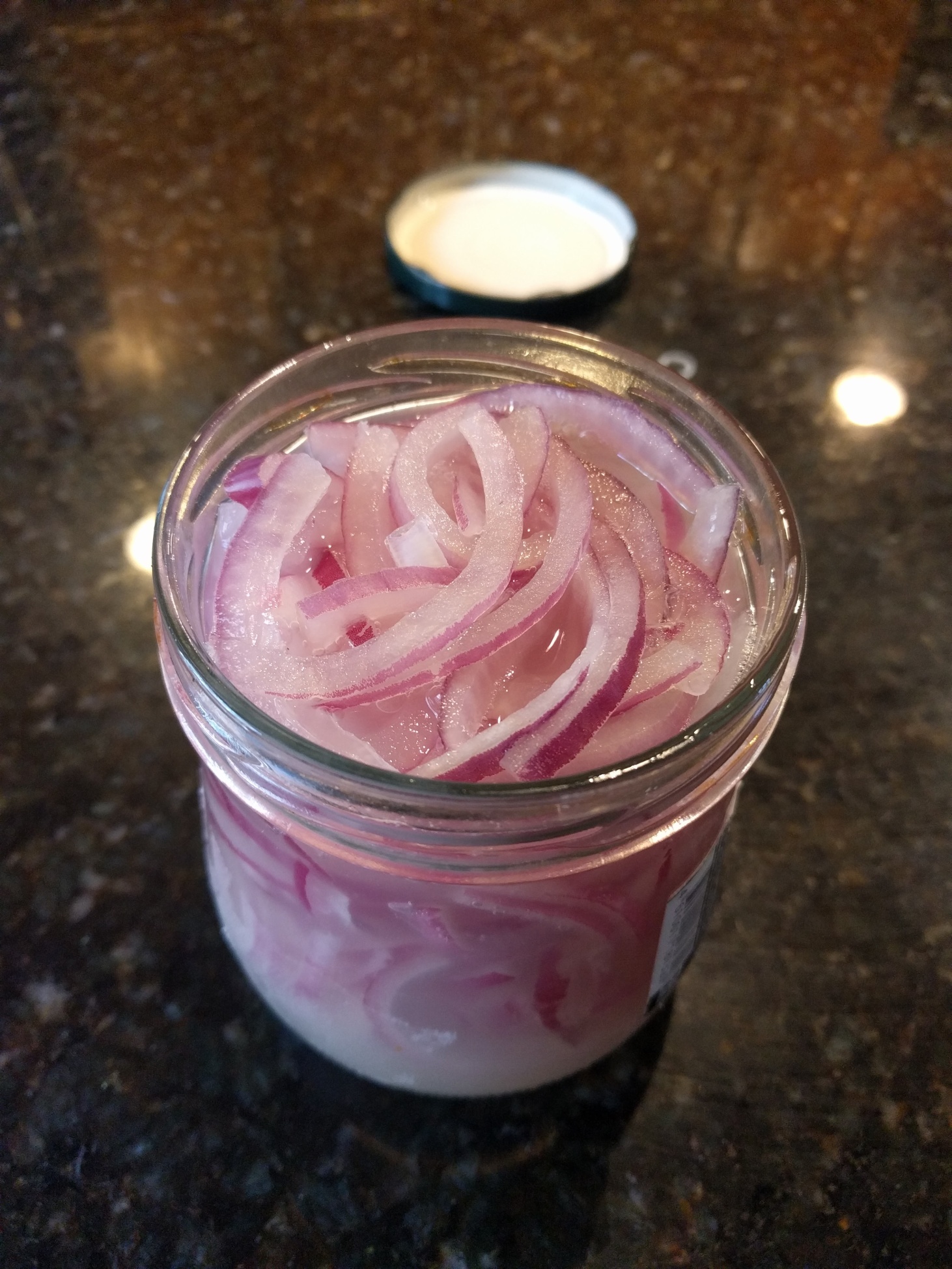Crème Fraîche
This is a sour and rich tangy treat that is easy. Just takes a bit of time.
- Allow heavy cream to sit in a glass bowl in the kitchen until it reaches room temperature.
- Add culture, and stir until combined. This could be yogurt (couple tablespoons), buttermilk (couple tablespoons) or a freeze dried culture (1/8 tsp per quart of heavy cream). I used mesophilic MM100 and had great results.
- Let sit for 9-72 hours in glass with a cheesecloth wrapped on top. Warmer the room, faster process occurs. Slowly, mixture will thicken and start to smell sour.
- Once it’s sour enough for your liking (try it), move to fridge. It lasts a while because the bacteria adds additional shelf life.



Yogurt
Yogurt is actually very easy and inexpensive to make. I use up extra milk that I fear will expire soon and adjust the quantities as needed. The steps below produce a very tart yogurt that is a bit thinner than what you’d get in a store. If you want Greek style or for it to be thicker than what it is, you can always strain with a cheesecloth to remove some of the whey. Here are the basic instructions:
- Heat 4 cups of milk to 180 degrees, stirring regularly to avoid the formation of a skin.
- Remove from heat.
- Meanwhile, preheat the oven to 200 degrees.
- Keep an eye on the milk, checking it every few minutes until the temp is down to 110-115 range. Stir it every once and a while.
- Take 1/4 cup of existing yogurt (can be from the store or from a previous batch), and mix with 1 cup of the milk in a separate bowl until yogurt is absorbed.
- Now, move that mixture into the pot, and stir until the mixture is a smooth consistency.
- Put a lid on it, and place in the warm oven.
- Turn off the heat to the oven.
- Leave undisturbed in the oven overnight.
- In the morning, move to the fridge.
- Eat once chilled. It will keep for a week or two.



Sauerkraut
This is another easy product to make, but it just takes time. It just requires salt and cabbage and a few days. Here are the basic steps:
- Thinly slice 4 pounds of cabbage (two medium heads).
- Place in a large pot. I use one that’s about 10 inches across and 15 inches deep.
- Combine cabbage with 2-3 tbsp salt. You can just dump it in – no need to measure.
- Stir it around with your hands until it’s evenly mixed with the cabbage.
- Place something flat on top of the pile of cabbage. I use a 9 inch cheesecake pan bottom.
- Place something heavy on top of the barrier. I use a heavy bottle of vegetable oil, but anything will work.
- Ensure the cabbage is tightly packed and squished down in the bottom of the pan. Leave it out at room temperature.
- After a few hours, check the cabbage. Mix it around with your hands. You’ll notice there is a salty liquid forming on the bottom of the pan.
- Keep checking it a couple times a day. Eventually all of the cabbage should be submerged.
- If it’s not fully submerged after a few days, you can add your own salt water until the mass of cabbage is fully under the liquid. This sometimes happens with store bought cabbage that was picked a long time ago. I’d recommend using 2 tbsp of salt for every 4 cups of water.
- Keep stirring it around once every couple days. It will start to smell. It has a vinegary funky scent to it.
- After a week or so, start tasting it when you check on it.
- Once it’s reached your desired level of sour, pack into glass jars and refrigerate. Refrigeration significantly slows the fermentation, and the taste will remain fairly stable.
- Eat it!



Purple variety:

Lacto-fermented vegetables
This is a great way to utilize extra liquid whey. It’s also quick and easy. Here are the basic steps:
- Put sliced vegetables of choice into a glass jar.
- Add whey to cover.
- Sprinkle in some salt (not iodized but any other kind works).
- Top with lid, and shake until contents are evenly distributed.
- Let sit on the counter for a few days.
- Occasionally, burp the jar and check on it.
- After 5 days, start tasting. It will get more funky and sour with time.
- Once it’s reached your desired level of funk, move to the fridge.
- The fridge will pause the fermentation process, and you can eat whenever you’d like.
Here I used under ripe cherry tomatoes:


Here I used sliced red onions:

These are lacto-fermented carrots:

